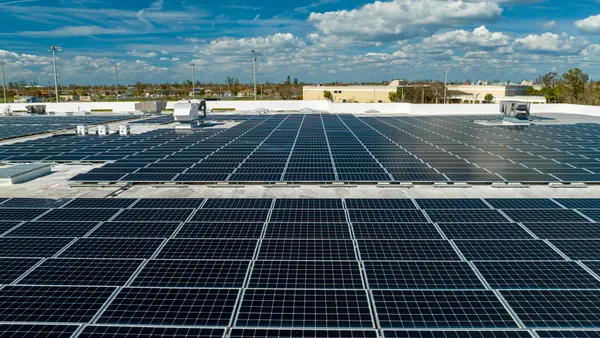Dive Brief:
- Predictions for microgrid markets continue to rise, and now Transparency Market Research believes what was a $9.8 billion market in 2013 will rise to $35.1 billion in 2020, Microgrid Knowledge reports.
- In addition to their ability to operate free of the grid, microgrids are growing because of rising demand for secure, emissions-free and reliable power, the report finds.
- Defense and the military segment will be the biggest user of microgrids in North America, but microgrids will also see rapid growth in remote island regions in the near term.
Dive Insight:
Transparency Market Research points out many of the usual reasons microgrids are growing rapidly – outages, depleting supply of fossil fuels, costs concerns about energy security – but the biggest news is in the topline numbers: $35.1 billion, and a compound annual growth rate of 20.7%.
While the North American military complex will dominate microgrids initially, "Asia Pacific and Europe will also tread on a positive path, as a large number of investments are being made in restructuring the energy mixes," the firm said in a summary of its research. "The presence of supportive regulatory policies will also help the microgrid market grow in these regions. Countries that haven’t yet invested in microgrids will become the primary targets for major players in the global microgrid market in the coming few years."
By comparison, Navigant Research in 2014 predicted worldwide microgrid revenues would grow from $4.3 billion in 2013 to $19.9 billion in 2020. Utility distribution microgrids have grown seen significant growth in recent years; that sector is expected to reach $5.8 billion in 2023.
Beyond market value, microgrid capacity is also on the rise, though tracking it is a difficult task.
Navigant's Microgrid Deployment Tracker last year found 1,437 projects worldwide, representing 13.4 GW of capacity. Those projects could be operating or in development, and when you compare the numbers to year's past the increase is sharp: Three years ago, Navigant had identified just 3.2 GW of total microgrid capacity.













